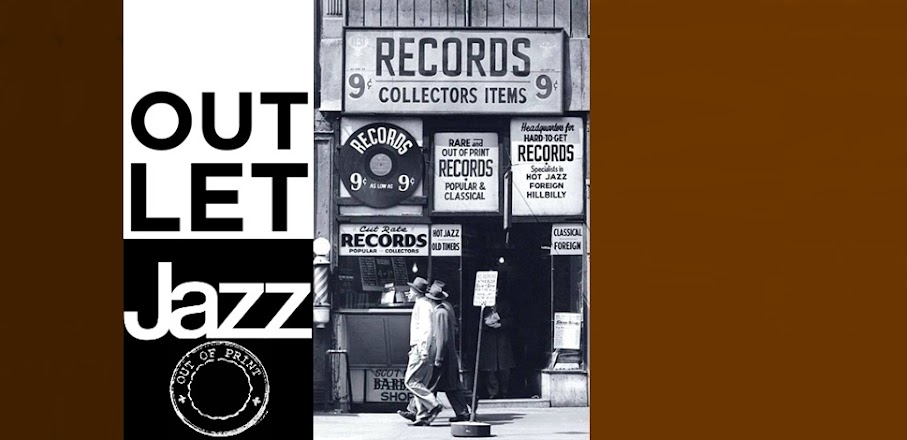Howard Rumsey's Lighthouse All Stars
Host Charlie Persip And His Jazz Statesmen
Double Or Nothin'
Lighthouse Series • Volume 1
One of the few albums ever cut as a leader by crack drummer Charlie Persip — and a great record that you might have missed because Howard Rumsey's name is bigger on the cover than Charlie's! The album's one of Rumsey's "Lighthouse Series" sides of the 50s — but it's a lot harder-driving and more energy-filled than most of the other Lighthouse-related sides coming out of LA at the time. Half the record features Charlie's group — a set of east coasters that includes Lee Morgan, Benny Golson, and Wynton Kelly — and the other part features some of the players from that ensemble mixing it up with drummer Stan Levey and other LA talents that include Frank Rosolino, Conte Candoli, Bob Cooper, and others. In all, the album's a great meeting of east and west coast hardbop styles — with short driving tracks that include "Reggie Of Chester", "Celedia", "Moto", "The Champ", and "Wildwood". *Dusty Groove, Inc.*
Double or Nothin' promises a creative East Coast-meets-West Coast musical confrontation, but never delivers. Ace trumpet men Conte Candoli, based in California, and Philly-born Lee Morgan, then making his first impression on the jazz world, headline this 1957 session that grew out of a Charlie Persip gig at the legendary Pacific Coast club the Lighthouse. These two all-star groups belie the assumptions made at the time about the differences between the East and West Coast sounds (with underlining racial assumptions). Both trumpet players draw heavily on Dizzy Gillespie for inspiration, and both saxophonists (Benny Golson and Bob Cooper) are more indebted to swing master Lester Young than to any bebop saxophonist. Indeed, the contrast between the two is one of the pleasures of the session. Golson's lines are blurry and oblique, while Cooper's are finely etched and to-the-point. Both are also more noted for their writing skills, which are also on display here. Though the listener may expect such a jam session would feature usual blowing vehicles, here the music is largely original or of more recent vintage (though two [Golson's "Stablemates" and Horace Silver's "Quicksilver"] were destined to become standards). While the repertoire is refreshing, it leads to tentative performances on the tracks in which the two groups interact. The solos have awkward pauses between phrases, and loquacious soloists such as Morgan and trombonist Frank Rosolino rely on pet turns of phrase. The strongest playing comes on the tracks when the Morgan group and the Lighthouse All-Stars play as separate units. *David Dupont*
1 - Reggie Of Chester
(Benny Golson)
2 - Stablemates
(Benny Golson)
3 - Celedia
(Benny Golson)
4 - Moto
(Bop Cooper)
5 - The Champ
(Dizzy Gillespie)
6 - Blues After Dark
(Benny Golson)
7 - Wildwood
(Gigi Gryce)
8 - Quicksilver
(Horace Silver)
#1:
Lee Morgan (trumpet), Benny Golson (tenor sax),
Wynton Kelly (piano), Wilfred Middlebrooks (bass), Charles Persip (drums).
#2:
Lee Morgan (trumpet), Frank Rosolino (trombone), Benny Golson (tenor sax),
Dick Shreve (piano), Red Mitchell (bass), Stan Levey (drums).
#3:
Conte Candoli (trumpet), Frank Rosolino (trombone), Bob Cooper (tenor sax),
Wynton Kelly (piano), Wilfred Middlebrooks (bass), Charles Persip (drums).
#4:
Lee Morgan, Conte Candoli (trumpets); Frank Rosolino (trombone);
Benny Golson, Bob Cooper (tenor saxes); Dick Shreve (piano),
Red Mitchell (bass), Stan Levey (drums).
#5:
Conte Candoli (trumpet), Frank Rosolino (trombone), Bob Cooper (tenor sax),
Dick Shreve (piano), Red Mitchell (bass), Stan Levey (drums).
#6:
Lee Morgan (trumpet), Benny Golson (tenor sax),
Wynton Kelly (piano), Red Mitchell (bass), Charles Persip (drums).
#7:
Lee Morgan, Conte Candoli (trumpets); Frank Rosolino (trombone);
Benny Golson, Bob Cooper (tenor saxe); Wynton Kelly (piano);
Wilfred Middlebrooks (bass); Charles Persip (drums).
#8:
Conte Candoli (trumpet), Frank Rosolino (trombone), Bob Cooper (tenor sax),
Dick Shreve (piano), Red Mitchell (bass), Stan Levey (drums).
Recorded at Liberty Studios, in Hollywood, California,
February 14 (#2, #4) and 27 (#1, #3, #5 to #8), 1957


https://1fichier.com/?rc9tkhokketjsacuiujf
ReplyDeleteMuchas gracias. Esto empieza muy bien.
ReplyDeleteThank you, blbs.
ReplyDeleteMuchas gracias,
ReplyDelete